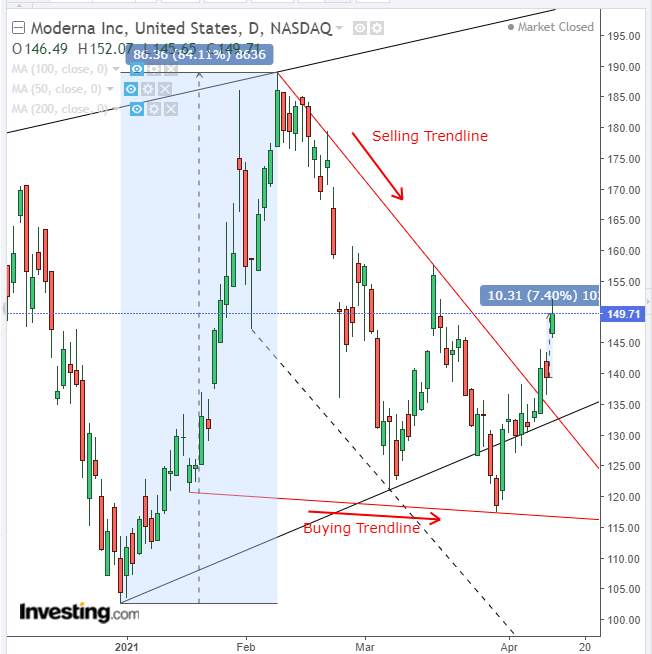Yesterday, the US Food and Drug Administration halted the use of Johnson & Johnson's (NYSE:JNJ) one-shot coronavirus vaccine when a rare blood-clotting disorder developed in six women between the ages of 18-48 and one died. After the announcement, Moderna (NASDAQ:MRNA) quickly, and appropriately, defended its own vaccine, which the company pointed out, uses a different technology.
While the FDA was careful in its language, calling the stop a “pause,” it could create a serious setback for the Biden administration's ongoing efforts to ramp-up vaccination efforts across the country as inoculation supplies will likely diminish, at least in the short run. In addition, this setback could convince people already uneasy about the vaccines to decide not to vaccinate at all.
After the J&J news broke, some of that changed. Markets beat up on JNJ and AstraZeneca (NASDAQ:AZN), whose vaccine is also causing worrying side effects in a small number of recipients. Shares of both pharmaceutical companies dropped yesterday on Wall Street.
Ironically, we wrote about Pfizer (NYSE:PFE) on Tuesday for this column, before the JNJ pause was announced. In our view at the time, Pfizer's fundamental and Moderna's technical outlook were the strongest among its vaccine competitors.
Conversely, Moderna surged, outperforming all competitors, to gain 7.4%. The upside looks like it might just be getting started too.

Chart powered by TradingView
After the stock slipped for a few days in late March, to fall below a rising channel, the price rebounded strongly into it. There it found clear support at the bottom of the pattern.
The price’s decline was structured within a falling channel, but that soon morphed into a falling wedge, bullish after the 86% catapult that occured in less than 15 weeks which preceded the wedge. This is considered a continuation pattern, as it shows how, despite the overselling—which is understandable after an incredibly profitable run, illustrated by a faster falling trend line—buying was able to support the price, represented by a slower falling trend line. This indicates that once supply runs out, demand will carry prices higher.
A falling wedge’s target is its top, which agrees with the expectation that a price that bounces off the bottom of a rising channel will retest the previous high on its way to the channel top.
Trading Strategies – Long Position Setup
Conservative traders should wait for a return-move to ascertain there's sufficient demand to push prices back upwards.
Moderate traders would wait for the same pullback for a better entry, if not for the additional confirmation.
Aggressive traders could enter at will, having understood the increased risk of lesser evidence of the uptrend as the price to pay for increased reward for moving ahead of the rest of the market.
A trade plan is essential; here’s an example of a basic one:
Trade Sample
- Entry: $150
- Stop-Loss: $130
- Risk: $20
- Target: $210
- Reward: $60
- Risk:Reward Ratio: 1:3
Author's Note: This is just a sample. There are a variety of approaches to this trade. We’ve selected a price that never existed for a target to justify the risk. A trader could wait for a dip, to limit exposure from the presumed pattern’s demand or place his stop closer but without as much support. The risk in the former is missing out on the trade if there’s no corrective decline; the hazard in the latter is that it will be stopped out for a lack of support.
You must develop the style that suits your timing, budget and temperament. Until then, take small risks for the purpose of learning and gaining experience. Don’t delude yourself that you can make quick profits immediately. If you do, you won't learn anything but you could lose your shirt.
